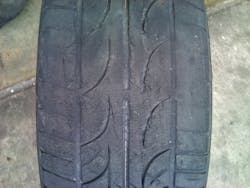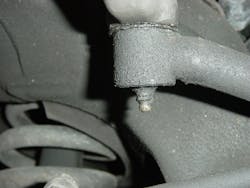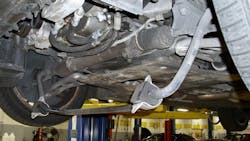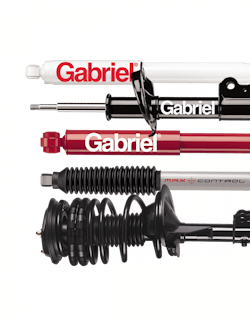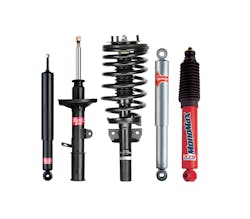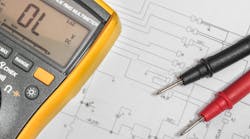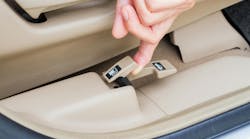“Speed costs money. How fast do you want to go?” We’ve all heard that old saying, and in motorsports of every genre the ability to go fast often is considered the primary element in getting to the winner’s podium. But even in the high horsepower world of drag racing, where the race is over mere seconds after it began, horsepower means very little if the car can’t get it to the ground and keep it there. Add in the need to shift direction shared by most other styles of racing, and you soon can appreciate just how serious a role the suspension and steering systems play in the final outcome.
Starting at the Beginning
“Where the rubber meets the road” might be another antiquated adage, but there is a lot of truth in those simple words. The ability of the driver to maintain control of the car is tied to keeping the tire in contact with the pavement. Consider the weight of a modern automobile or light truck and then imagine for a moment the area of a tire’s “contact patch,” or that part of the tire that is in physical connection with the road surface. That contact patch is roughly the size of an average man’s hand and, times four, is all that stands between control and loss of control.
Stick to It
The tire can grip the road only while it is in contact with the road. Think a moment about what happens when the tire encounters an obstacle in its path, say, a pothole. The tire rolls forward to the lip of the hole before the surface falls out from underneath the contact patch. Now all the weight of the vehicle being applied to that wheel drives the tire downward into the hole until it reaches bottom. The impact of that force is felt by the tire and with no other way to dissipate, is returned up the chassis connections to the vehicle and ultimately, the occupants. That is, unless we have some way to control that energy.
That is the role of the suspension system. The tire/wheel assembly is connected to the car by springs (coil, leaf or torsion bar). This allows the wheel to move up and down in response to the road surface. The springs are preloaded (compressed slightly) by the weight of the car. When an obstruction is met, whether it is a hole or a bump, the tire/wheel assembly is free to move with the obstruction. But the force of that moving mass is taken in by the spring and passed on to the vehicle and ultimately the occupants. And because energy cannot be created or destroyed, that same force follows the same path in reverse back to the road through the tire. A small amount of that energy is dissipated through the spring in the form of heat but not enough to prevent the car from acting like a pogo stick.
That builds the case for routine replacement based on mileage intervals with many suspension manufacturers suggesting replacement at 50,000 miles for conventional designs. I admit, I was one of those techs that didn’t like to recommend replacement unless a car failed the “bounce” test I was taught back in the 1970s or I saw signs of definite fluid loss on the shocks themselves. But I have changed my mind after learning more about how the innards of a shock work.
Inside the Tube
Think of a shock absorber as a little piston/cylinder assembly with a small hole in the top of the piston and the piston assembly submerged in oil. The oil acts as a resistive element that opposes the motion of the piston as it tries to move in and out in synch with the wheel. It takes energy to force the piston through the oil — or more accurately, to force the oil through that little hole — and that frictional resistance is what changes the energy of motion (of the wheel/spring) to heat that can then be dissipated to the air.
Above the piston is a small air pocket. The air pocket is there to accommodate for the change in fluid level as it is displaced by the piston rod. Shocks actually use high-pressure gas (nitrogen) to prevent cavitation of the fluid, which would lead to a loss of frictional dampening. When inspecting shocks, a slight amount of fluid at the piston seal is normal but traces of fluid leaking down the shock body is a definite indication of the need for replacement.
The basic explanation I gave is fine for a shock that moves at one speed under one load. But of course, that isn’t what happens in the real world. There are a variety of bumps; from pavement grooves to New York City potholes and shocks use pistons with calibrated holes matched to highly engineered friction discs to allow for a wide range of dampening rates to meet that need. Consider that the lightest spring discs, the ones that are in charge of smoothing out normal pavement so the driver’s rear end doesn’t have to, are moving almost continuously as the piston in the shock moves and that the piston moves approximately 1,500 to 1,900 times per mile and it doesn’t take an engineering degree to do the math — that’s 75 million strokes over 50,000 miles.
A Change of Direction
So far we’ve talked about what it takes to keep the tire on the ground in a straight line. Now it’s time to add in a change of direction. After all, what fun would driving straight all the time be?
We’ve all seen the pictures on the Internet of failed tie rod ends leaving some unfortunate soul stranded on the side of the road with both wheels pointing in totally opposite directions. My question is, “Have you ever seen one posted that was just in your shop a few days before?” I hope not! Performing a functional inspection of the steering system should be a part of every vehicle inspection you do.
Notice I said “functional” inspection. Just grabbing the wheel and giving it a good shake might find some issues, but it won’t find them all. Be sure you follow the service procedures when checking for excessive play in ball joints and tie rods. Look for torn, damaged or missing dust boots. If grease fittings are present, be sure to lube them each time the vehicle comes in. Inspect the power steering rack mounting bushings for wear and tear, and the rack bellows for damage or signs of fluid leakage.
Repair or replacement of steering components (and sometimes with suspension components) requires a check of wheel alignment after the repair is made. Are you also performing any required recalibration of any steering angle or yaw sensors at the same time? This is an important part of the alignment process on many vehicles today and should not be overlooked. It can impact vehicle safety systems (electronic stability control comes to mind) and that any action (or inaction) you take that causes a safety system to be disabled is a federal no-no.
Taking That Extra Step
If at all possible, take every vehicle you service for a test drive on a standard route near your shop. It should simulate a variety of driving conditions and loads. Does the car accelerate well? Decelerate and brake without obvious issues? Does the car feel stable in turns? If you can perform this run before any service or inspection work is done, that would be the best-case scenario. That way, any issues or problems you discover can immediately be brought to the customer’s attention.
Absolutely the test drive should be done before returning the vehicle to the customer. This provides you the opportunity to make sure the work you performed did indeed correct the initial concern. It also provides one last opportunity to make sure there is nothing going on with the car you don’t know about. That protects your customer — and provides a little CYA for you.
